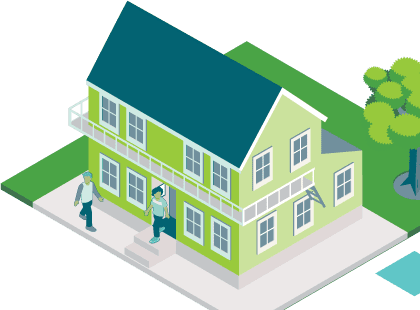Spring has sprung, and with the change in season comes an abundance of grass and plant growth.
Before you get out to inspect or work on your rental’s garden, make sure you know what you are responsible for.
Lawn and garden maintenance is a common cause of dispute between tenants and landlords. Disputes aren’t fun. One way to avoid them is to make sure you understand what you’re responsible for and to talk to each other as soon as possible if there are any issues or things you’re not sure about.
Tenant responsibilities in the garden
If you’re a tenant, you’re responsible for keeping the property reasonably clean and tidy. This includes mowing the lawns and weeding the gardens.
If you’re a tenant, you’re responsible for keeping the property reasonably clean and tidy. This includes mowing the lawns and weeding the gardens.
Sometimes, landlords are happy to mow the lawns or to get someone to do it. If this is the case at your rental, it should be written into the tenancy agreement or be detailed in writing and signed by all the tenants and the landlord.
Landlords don’t need to give notice to come onto the property (the land). This usually happens when the reason they are coming is to do agreed things like mow the lawns, prune the trees or clean the guttering. The landlord does have to avoid interfering with your reasonable peace, comfort and privacy.
Some trees and shrubs may need special care, skill or knowledge to maintain. They could also be protected species, or of local/historical interest and can’t be removed. So, if you want to prune or remove a tree, shrub or hedge you should get your landlord to look into those issues and get written permission first. If you do this then you are responsible for removing the cuttings.
If you want to start a vege patch or add a garden shed, you should talk to your landlord first. Tenancy law changes introduced in February 2021 included a new law that makes it easier for tenants to make minor changes to the property, but you still need to make a request to the landlord to make that change. The landlord cannot decline minor changes but they can set reasonable conditions.
Landlord responsibilities in the garden
If you are a landlord, you’re usually responsible for pruning and maintaining trees, shrubs and hedges, including removing the cuttings.
You are also responsible for making sure any trees are safe. Dangerous trees, shrubs or hedges might include trees damaged by storms or growing towards electrical lines.
Before you start a new tenancy, it’s a good idea to talk about the lawns and gardens of the property and make sure you both have a good understanding about what each person is responsible for. Make sure any conditions or agreements you come to are in writing and signed by both the tenant and landlord. For example, if the landlord agrees to mow the lawns every month include this and any details in the tenancy agreement.
If you are coming on to the land to mow the lawns or maintain the gardens, you don’t have to give notice, but you do have to avoid interfering with the tenant’s reasonable peace, comfort and privacy. A heads-up of when you are coming and what you’re coming for is a good way to help build a positive working relationship with your tenants.
Carrying out regular property inspections is a good way to check everything is working well and that the tenants are keeping the rental reasonably clean and tidy, including the lawns and gardens. It can also help prevent problems from getting bigger. Ideally, your tenant would be present during the inspections so they can raise any issues with you.
For more information about lawns and gardens, see our website.
Back to News